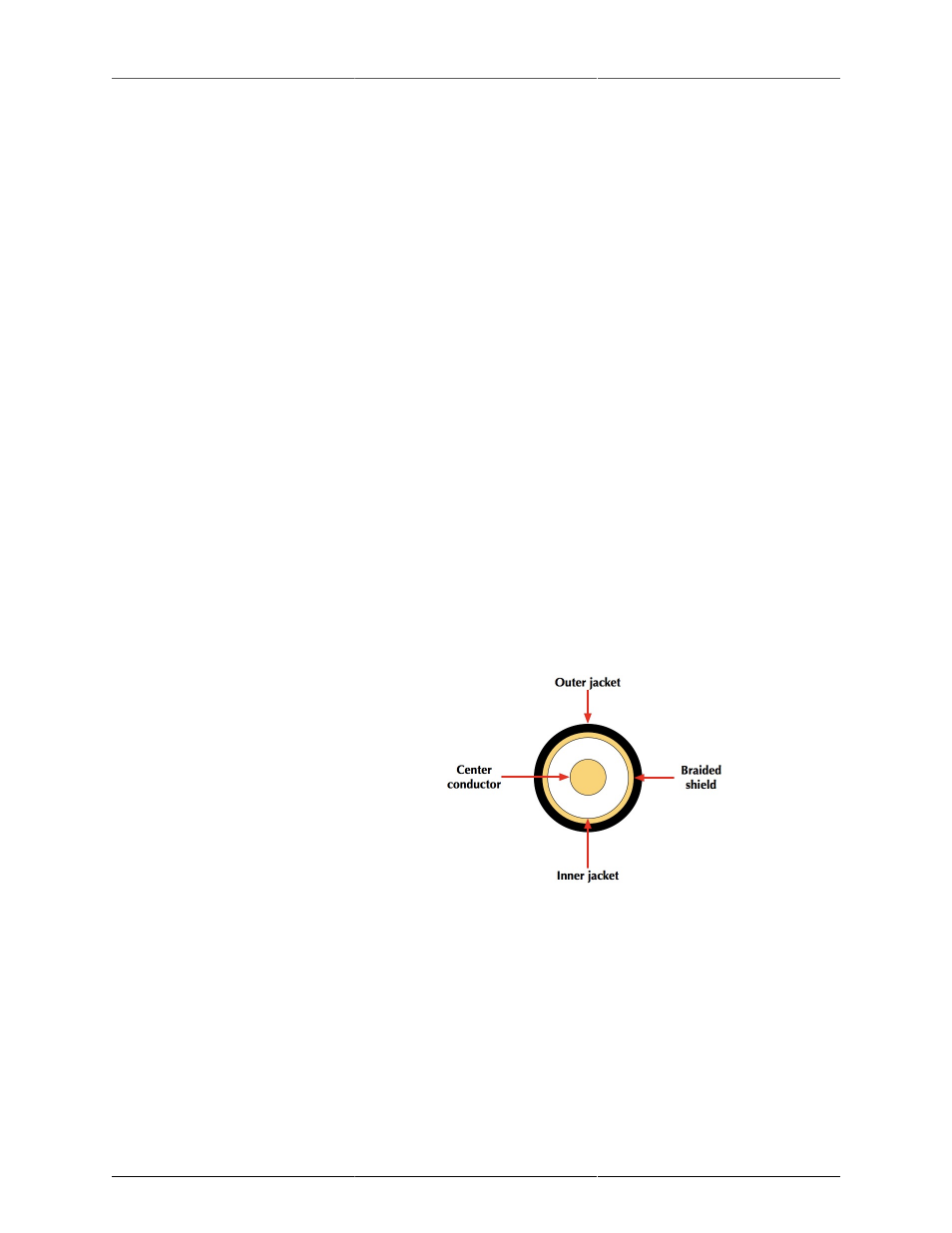Cross-section of a coaxial cable – Metric Halo Mobile I/O User Manual
Page 356

Glossary
356
is now out of phase in the “Cold” signal, and when the “Hot” and “Cold” are
summed the noise will cancel and only the original signal will remain.
BNC
A locking connector used for connecting RF and digital interfacing signals
over a coaxial cable. Commonly used in audio for wordclock connections,
as well as digital interfacing.
Boost
To increase gain.
Bus
A bus is used to mix signals together. To hear all of your inputs, they need
to be assigned to a bus, and the bus must be assigned to an output (such as
monitors or headphones). There are several types of busses:
• Summing or master mix bus: this is where all the signals are finally
mixed together.
• Master bus: In MIO Console, a master bus outputs to Firewire chan-
nels, physical outputs or the Monitor Controller.
• Aux bus: Used for “auxiliary” mixes, often for effects sends. In MIO
Console, an Aux bus outputs to a Master bus. Example uses would be
for reverb sends or stem mixing.
C
Cans
Another term for headphones.
Coaxial
Within the scope of this manual, coaxial refers to a type of cable that has
a central conductor (used for the signal) surrounded by insulation which is
then surrounded by a woven metal shield (used for ground) and finally an
outer jacket.
Figure 316: Cross-section of a Coaxial Cable
Cut
To decrease gain.
D
DAC
Digital to Analog Converter. The integrated circuit that receives digital data
at its input and outputs an analog representation of it.
DB25
A D-sub connector with 25 pins. These are becoming more common in audio
devices, since you can connect eight balanced channels of audio with one
DB25. Two devices with DB25 connectors can be directly patched together